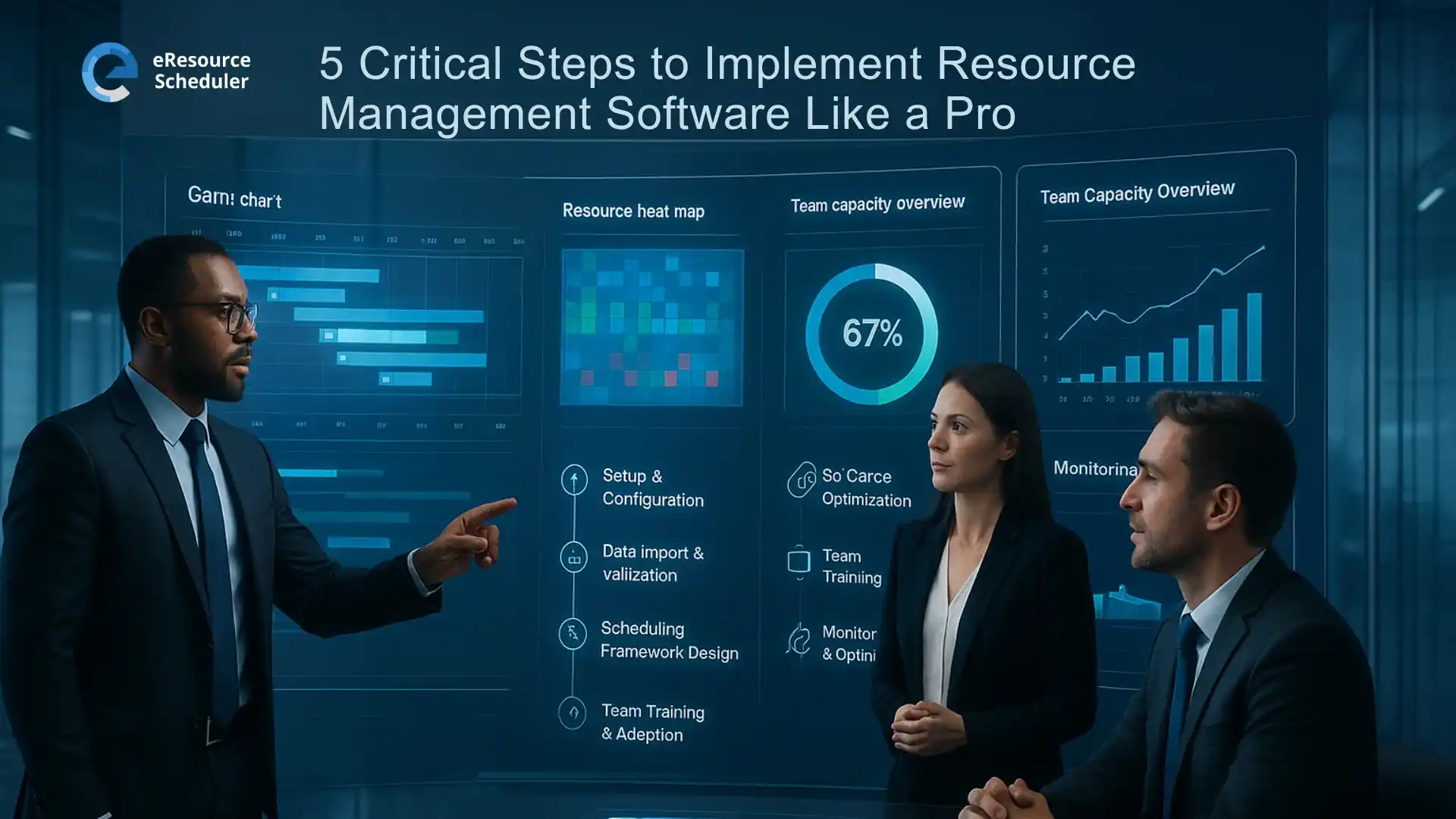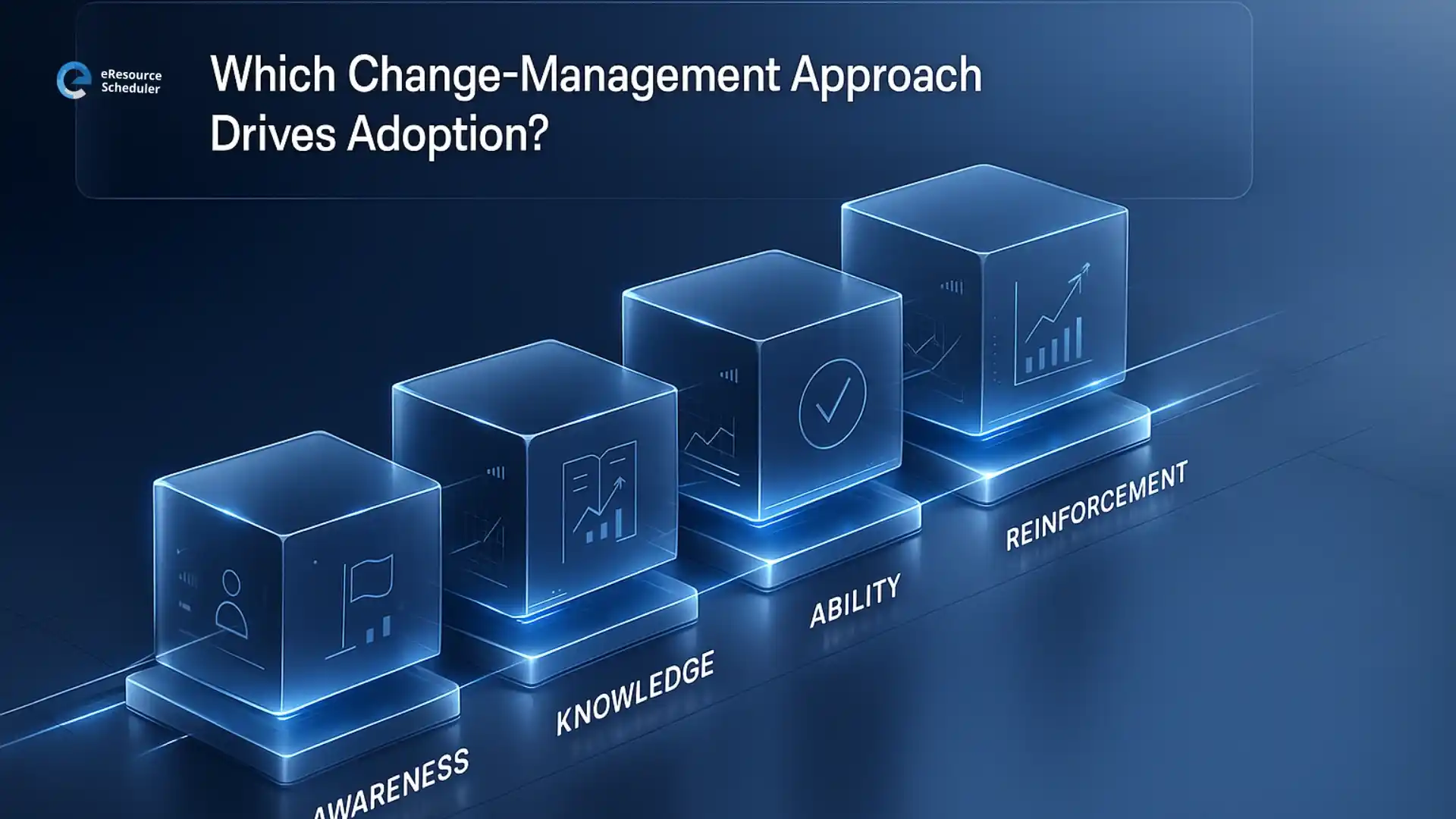
In today’s fast-paced business landscape, successful organizations rely on a resource scheduler to align capacity, demand, and deliverables. But buying resource management software is just the first step because the real value lies in how well you implement it. If done poorly, adoption fails, ROI deep-sixes, and teams fall back to spreadsheets.
Here are five critical steps, based on best practices and time-tested lessons, to implement a resource management software like a pro.
Before you roll anything out, clarity is non-negotiable. Start by aligning your leadership on what success looks like. Ask critical questions: What pain are we solving—over-allocation? Poor visibility? Cost overruns? What KPIs will define success (utilization, throughput, cost savings)?
Document these as your “north star”. Then, engage cross-functional stakeholders like project leads, finance, HR, and operations to build a shared understanding. This early alignment creates buy-in and helps avoid muddy priorities later.
Having the right team is the backbone of any rollout. You need people in-house who can steward the project, plus a vendor partner who’s deeply invested. Your internal team should include:
Yes, just two members initially, and you can add more training leads to the implementation team if required. You can choose one-on-one training or conduct resource scheduler workshops to bring the rest of the team on board.
Once your implementation team is set, this is the moment to get razor-sharp on what the business actually needs. Gather insights from every user group like project managers, delivery leads, functional heads, finance, and resource contributors. Capture their problems, workflows, approval chains, reporting needs, and pain points in a structured requirements workbook. This becomes the single source of truth for your rollout.
Use that workbook to configure your resource scheduler around the core use cases that matter right now. Prioritize essentials like allocation workflows, utilization views, forecasting, skills tracking, and availability management. The goal is to deliver a clean, intuitive first version that teams can trust. Today, most tools are incredibly feature-rich, which makes it even more important to focus on what directly drives planning accuracy and decision-making.
Locking scope early protects you from the classic trap of trying to launch everything at once. Scope creep slows your rollout, confuses users, and derails adoption. A disciplined scope gives your team clarity, accelerates time-to-value, and creates space to layer advanced features later, once teams are confident and the fundamentals run smoothly.

Even the slickest software fails if it sits unused. Your job is to drive adoption, not just hand over log-in credentials. Here is a high-impact framework to follow:
This roadmap reflects modern change practices and aligns with best practices cited across high-impact implementations.
Once your resource management software, like eResource Scheduler, is live, don’t treat go-live as the finish line. Instead, lean into continuous improvement:
A mature resource strategy doesn’t run on guesswork. Build a structured roadmap that anticipates where the business is heading and ensures your resource management software evolves with it.
Continuous improvement with a resource management software becomes sustainable only when you have a forward-looking roadmap that outlines:
This keeps the platform aligned with long-term business strategy rather than short-term fixes.
After continuous improvement sets in, plan your next move strategically:
Implementing resource management software like eResource Scheduler the right way isn’t just about technology. It’s about clarity, people, and process. When you align your team, control scope, encourage adoption, and keep improving, you set yourself up to get real ROI.
If you are ready to put these five steps into action, the best next move is to book a personalized demo of eResource Scheduler. Let us walk you through how it works, how it can be configured for your org, and how to maximize value quickly.
1. What is a resource scheduler?
A resource scheduler is a software tool that helps plan, allocate, and manage resources (people, equipment, time) across projects. It gives real-time visibility into workload, capacity, and availability.
2. How long does it take to implement resource management software?
Typically, a phased implementation (pilot + waves) takes between 3 to 6 months, depending on size, complexity, and user readiness.
3. How do I measure adoption success?
You can track usage metrics (log-ins, feature usage), user feedback, resource utilization, and KPI improvements (e.g., reduction in allocation conflicts).
4. Can eResource Scheduler integrate with other tools?
Yes, modern resource management software like eResource Scheduler often supports integrations with tools such as calendars, Slack, and many others to avoid data silos.
5. Do we need continuous training after rollout?
Absolutely. Continuous training via peer coaching, open-house sessions, and tutorials, helps embed the platform, drives adoption, and ensures teams extract full value over time.
Plan Smarter. Schedule Faster.
Join thousands already using eResource Scheduler to align teams, time, and tasks seamlessly.